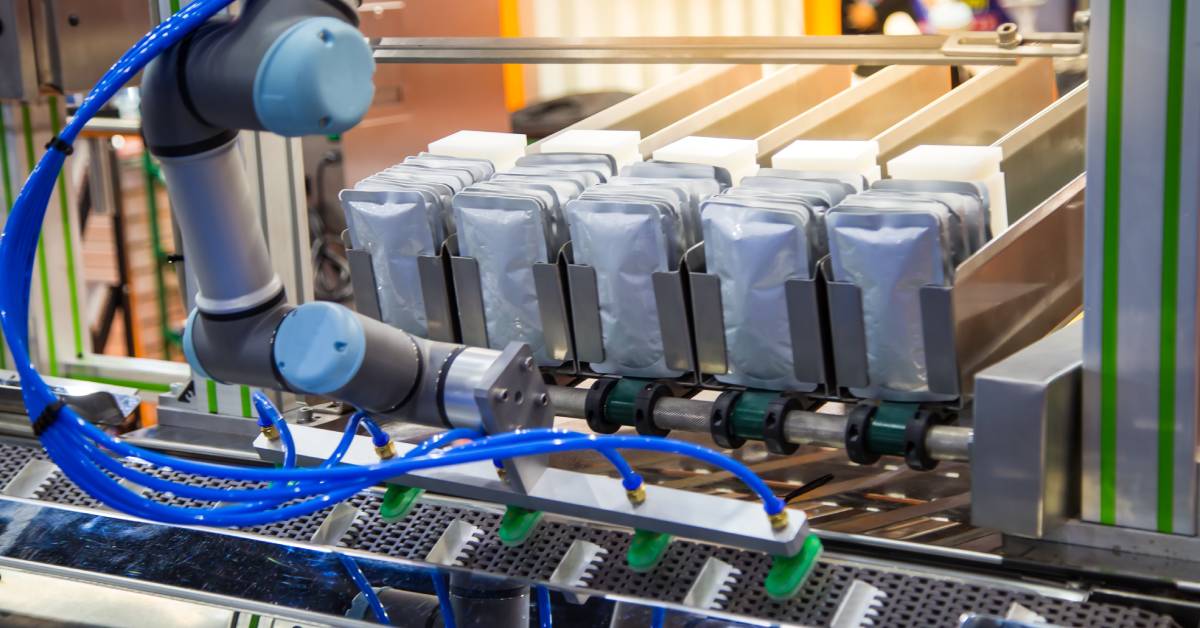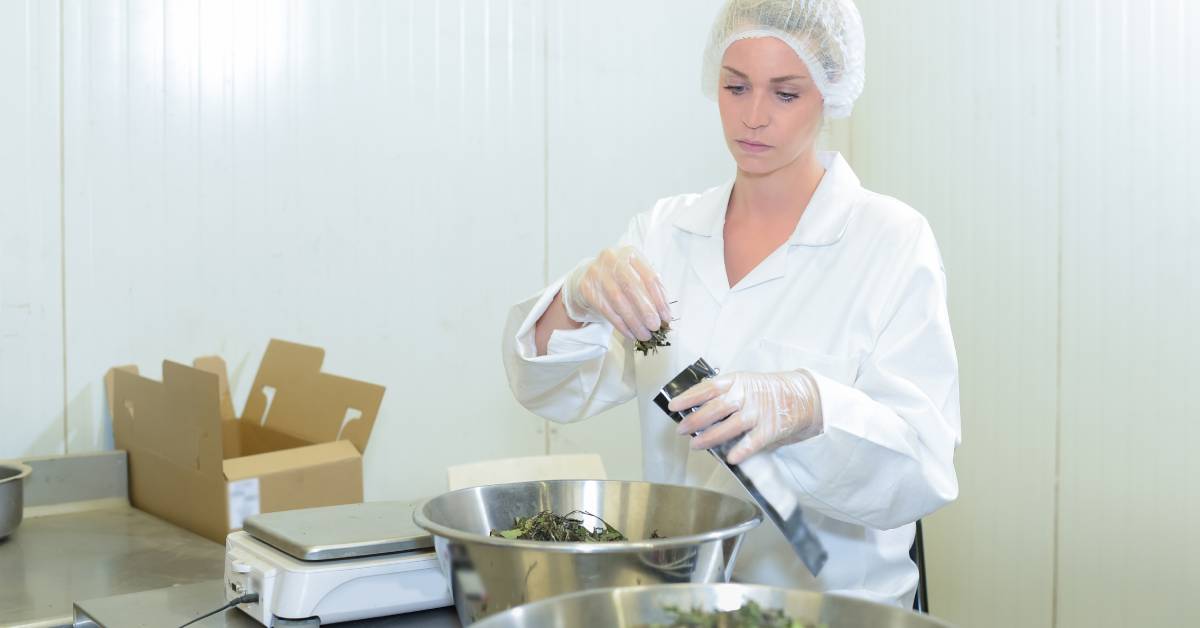Search
Additional Links Contact Us- Phone: (800) 423-4198
- Toll-Free: (815) 885-1900
- Email: [email protected]

ProMach is your partner from start to finish. Our product brands are grouped into distinct business lines that make the most sense to our customers, covering every function of the production line: Filling, Bottling & Capping, Decorative Labeling, Flexibles & Trays, Pharma, Handling & Sterilizing, Labeling & Coding, Robotics & End of Line, and Systems & Integration.
learn more
If you run a business that relies on pouch packaging, you’ve likely heard about the industry’s transformation over time. From slow, labor-intensive manual processes to today’s highly sophisticated systems, technological advances have helped streamline operations.
But what prompted this change, and how has it shaped the way businesses like yours work? Understanding the evolution of pouch packaging, from hand-packaged to automated, can help you choose the right solution for your needs.
Decades ago, many products used rigid containers or basic wraps, but as consumer preferences shifted, the demand for portable, flexible options grew. Early pouch packaging methods were primarily manual. Workers would fill and seal each pouch by hand, a process that took a lot of time. While effective for small-scale operations, business owners quickly realized that manual methods were unsustainable for higher demand.

Manual pouch packaging offered control and customization, but it wasn’t without its drawbacks. Human error led to inconsistencies in the right quantity, the quality of seals, and efficiency. These mistakes proved costly in wasted product and company reputation. Additionally, as businesses scaled up, labor expenses and the time needed for manual processes became impractical.
Manual packaging also limits the ability to meet high demand during peak seasons. Companies often struggled to maintain a consistent production pace, leading to delays in order fulfillment. Frequent errors would call for more quality checks, which further slowed operations and increased expenses.
Business owners that used pouch packaging began searching for solutions that could reduce labor costs, minimize errors, and keep up with increasing consumer demand. Early mechanization was the first step in automating pouch packaging.
Companies needed to offer diverse and customizable packaging options. The growing emphasis on sustainability became another concern, requiring eco-friendly materials and processes. These demands pushed manufacturers to rethink traditional methods and invest in research and development for smarter packaging solutions.
Semi-automated machines were introduced to help fill and seal packages, allowing businesses to process more pouches in less time. While these systems weren’t fully automated, they drastically reduced the workload for employees, increasing efficiency and lowering operating expenses.
These semi-automated systems paved the way for more precise filling and sealing techniques that would reduce product waste. They also allowed businesses to scale their operations without drastically increasing workforce size. This marked the beginning of a shift toward integrating technology into everyday production tasks, setting the foundation for fully automated systems.
With time, technological advancements led to fully automated packaging systems. These machines could handle everything from pouch filling to sealing and labeling without help from workers. The horizontal pouch packaging machine became a staple in many industries, offering a streamlined and consistent approach to high-volume production. This upgrade improved speed with precision, so every pouch met the same quality standards.
A key benefit of these machines is that they never tire or make errors from repetition the way humans do. Each pouch is filled accurately and sealed perfectly, and automated packaging systems can grow with your business, adjusting to higher production demands as needed.
Automated systems also dramatically reduce the time it takes to package products, allowing businesses to meet tight deadlines with ease. Though investing in equipment may need to fit budgetary constraints, these machines save money in the long-term by cutting labor costs and reducing waste.
Modern advances such as sensors, robotics, and AI further enhance packaging processes. A pouch packaging machine equipped with these technologies can adjust accordingly to every pouch, even if material inconsistencies arise. These systems have become smarter, contributing to better productivity and quality.
Modern features can predict maintenance needs by flagging issues before they occur. Sensors detect variations in temperature, pressure, and speed to support machine performance. Robotics integrated into packaging machines operate with consistency, especially for high-speed production lines.
Many consumers care about sustainability, and today’s automated packaging processes help businesses align with these values. Machines are designed to minimize the number of materials used and make recycling easier. Flexible pouches themselves are often more environmentally friendly than rigid containers, requiring less material to produce and simpler transportation.
Many machines now support biodegradable or compostable materials. Manufacturers also focus on reducing water and energy consumption during operations, helping businesses lower their carbon footprint. Additionally, smart systems track material usage, allowing companies to produce less waste.

Automation continues to successfully serve and meet critical standards across industries. In the food and beverage sector, businesses use automation to preserve freshness and uphold strict hygiene requirements.
In pharmaceuticals, automation ensures precision and consistency, guaranteeing exact dosages and product safety. The pet products industry also benefits, with faster production speeds allowing companies to offer more competitive pricing.
Improved efficiency ensures products reach store shelves faster, keeping up with customer needs. Innovations in packaging also enhance product quality and shelf life.
If you’re gearing up to improve your packaging process, understanding your specific needs is crucial. A few factors you may want to consider are:
It’s hard to imagine where pouch packaging might go next, but one thing is certain: automation will continue to expand. Smarter systems with AI integration and enhanced customization are already in development. Businesses that adapt early will position themselves for competitive advantage.
Pouch packaging will also see advancements in sustainable materials as companies prioritize eco-friendly solutions. Innovations in compostable and biodegradable pouches could become industry standards. Additionally, personalized packaging may drive brands to adopt more flexible printing technologies.
The evolution from hand-packed to automated pouch packaging was meant to solve critical problems that manual processes couldn’t address. Today’s automated systems save time and redefine the way businesses approach packaging, offering efficiency, precision, and sustainability.
If you’re ready to explore how automation can transform your packaging process, HMC Products is ready to support your efforts. HMC Products is a trusted distributor of packaging machines that offers various options designed to fit different business models and production requirements.